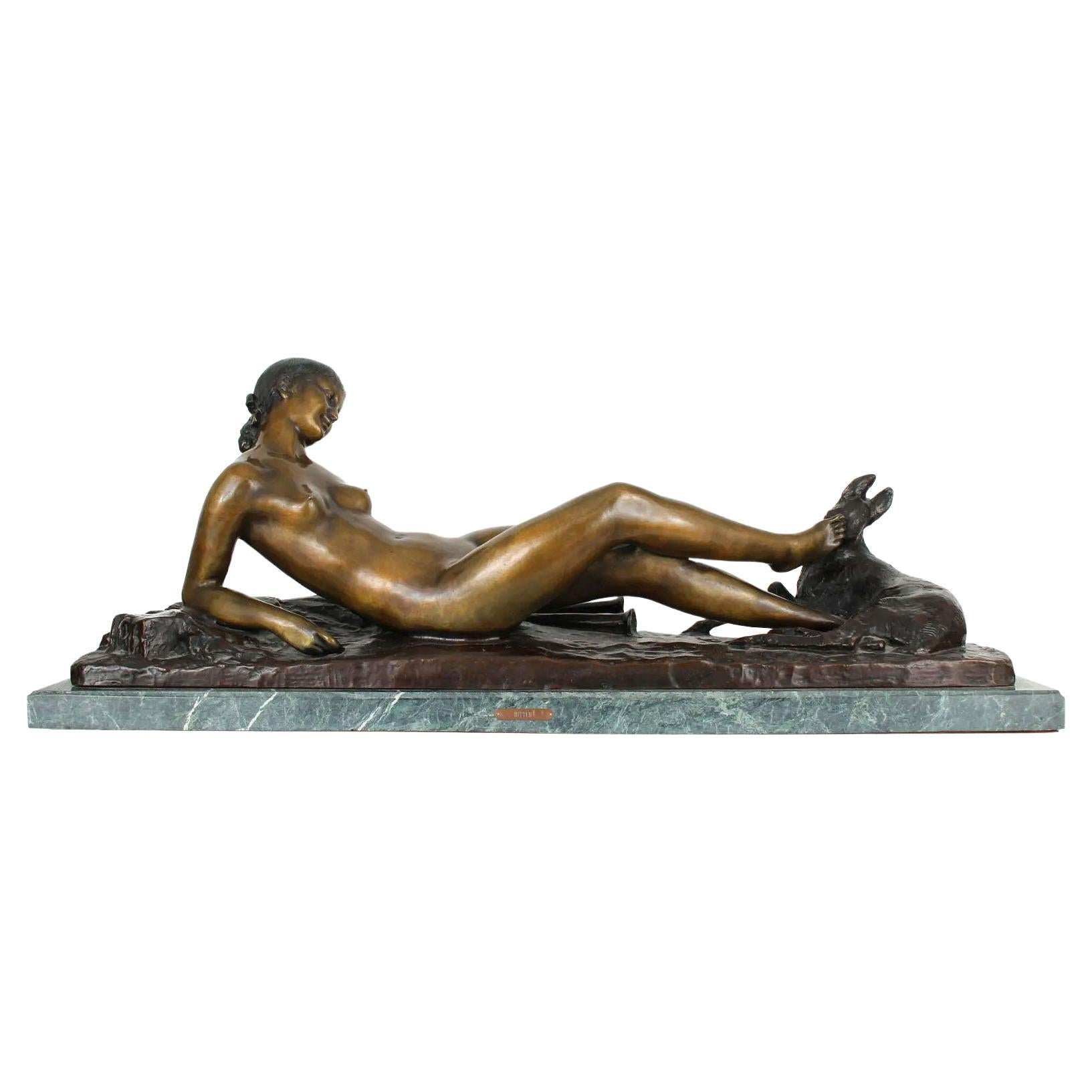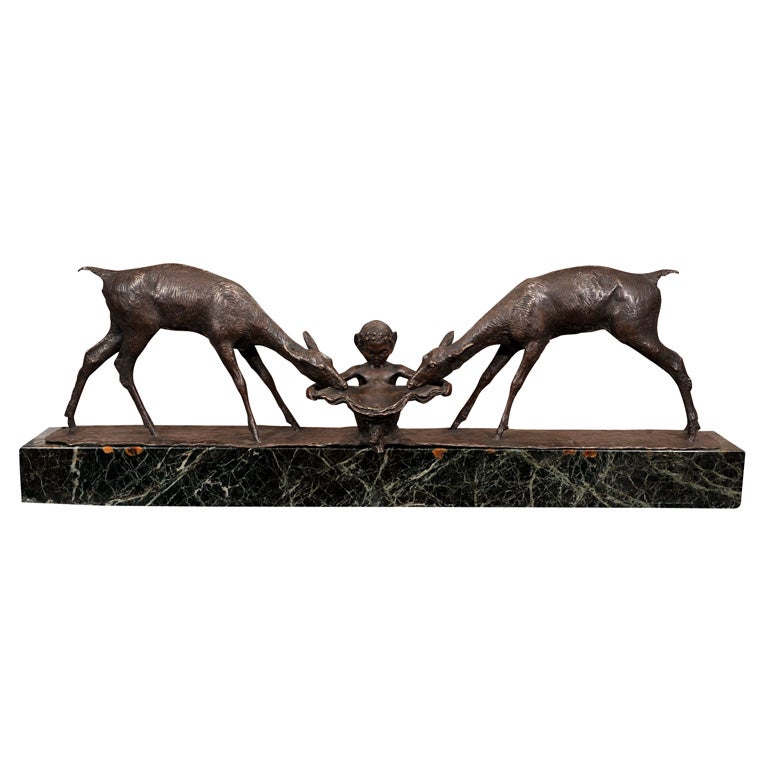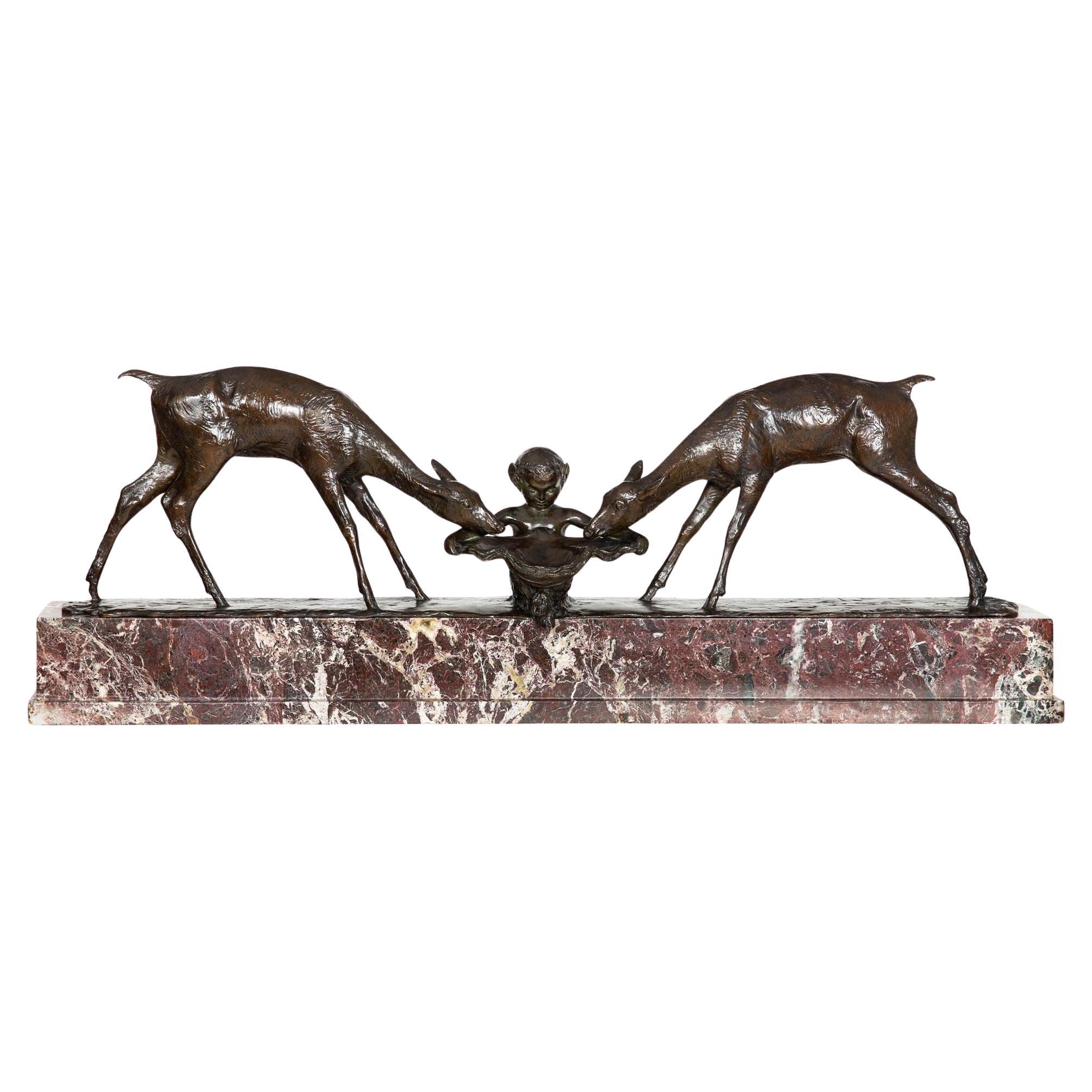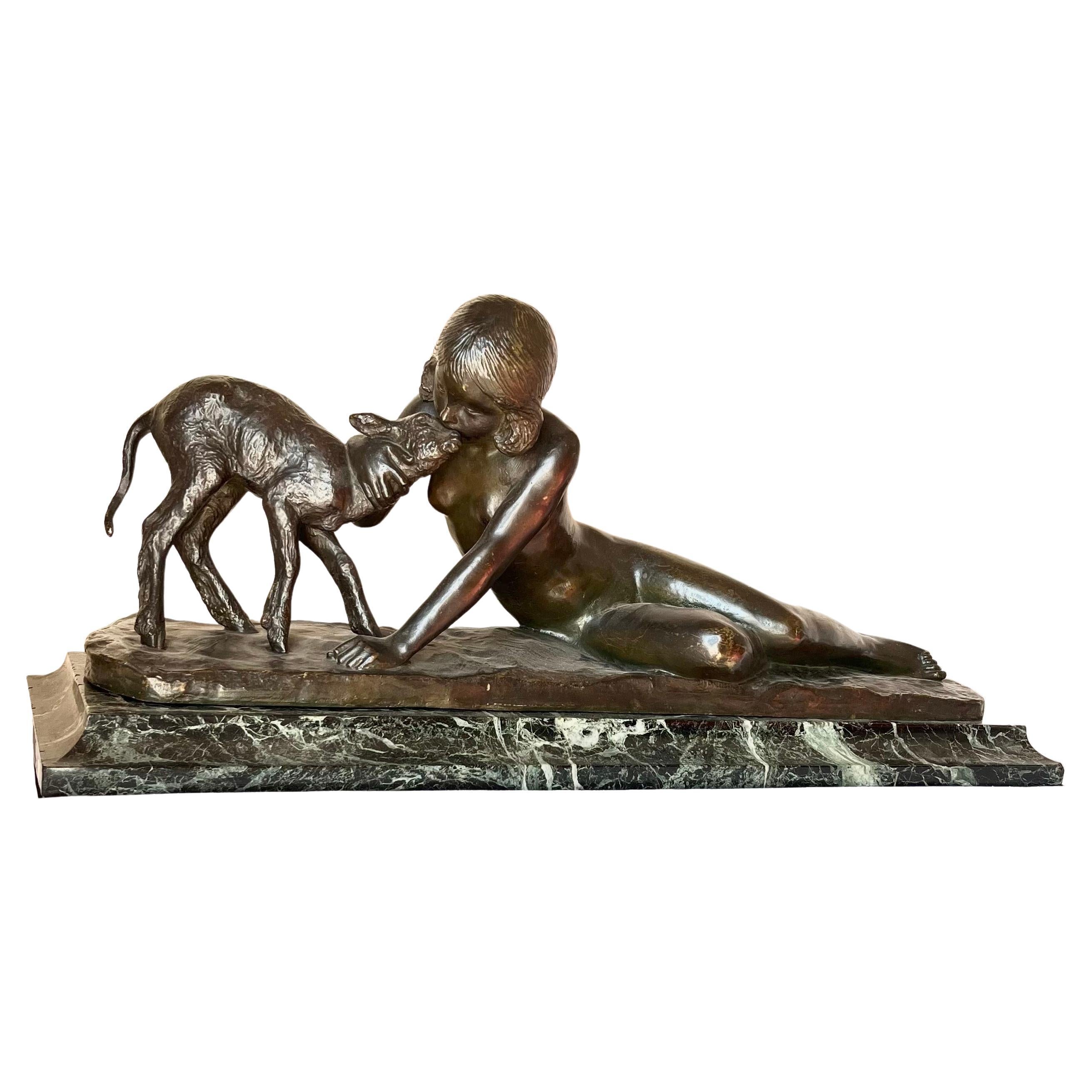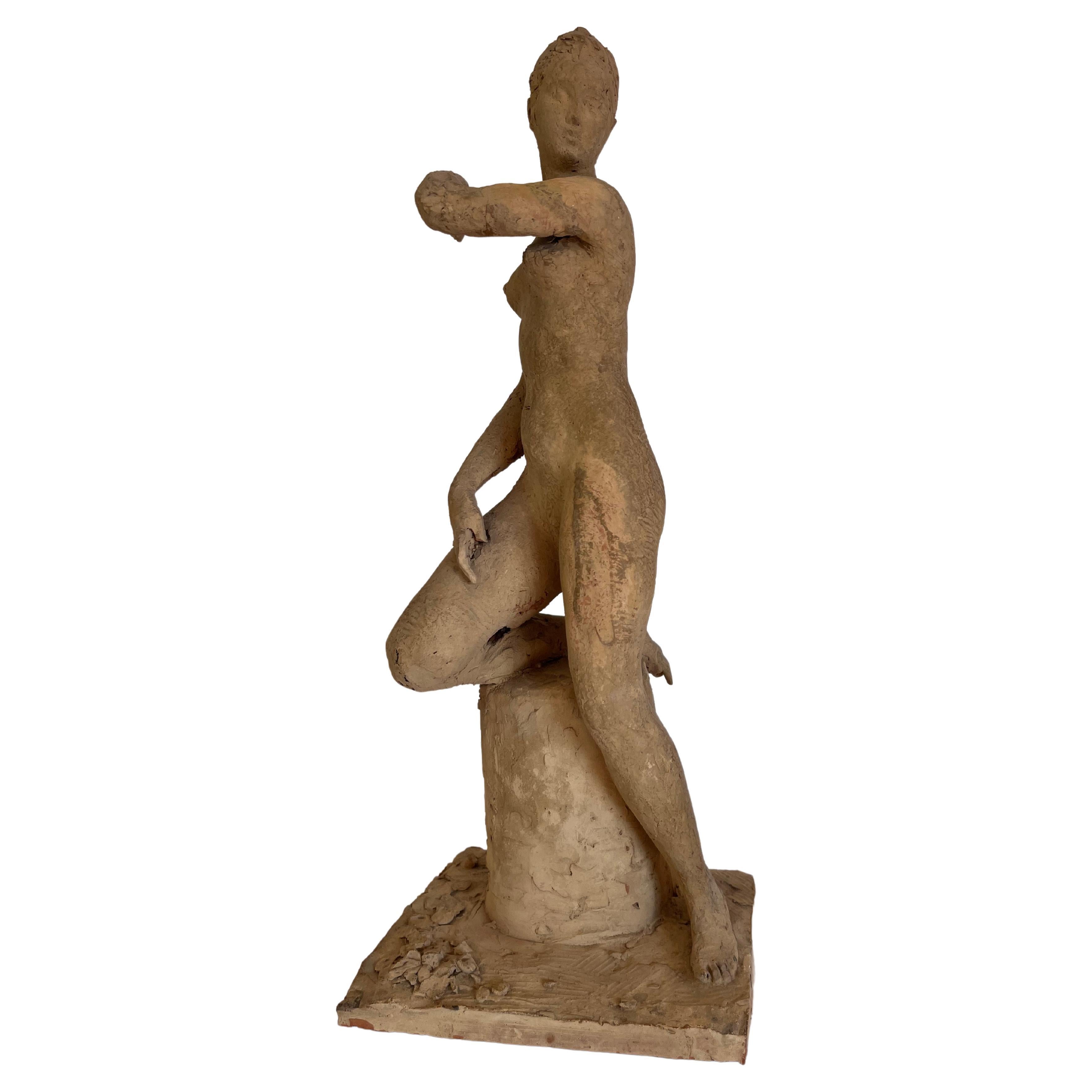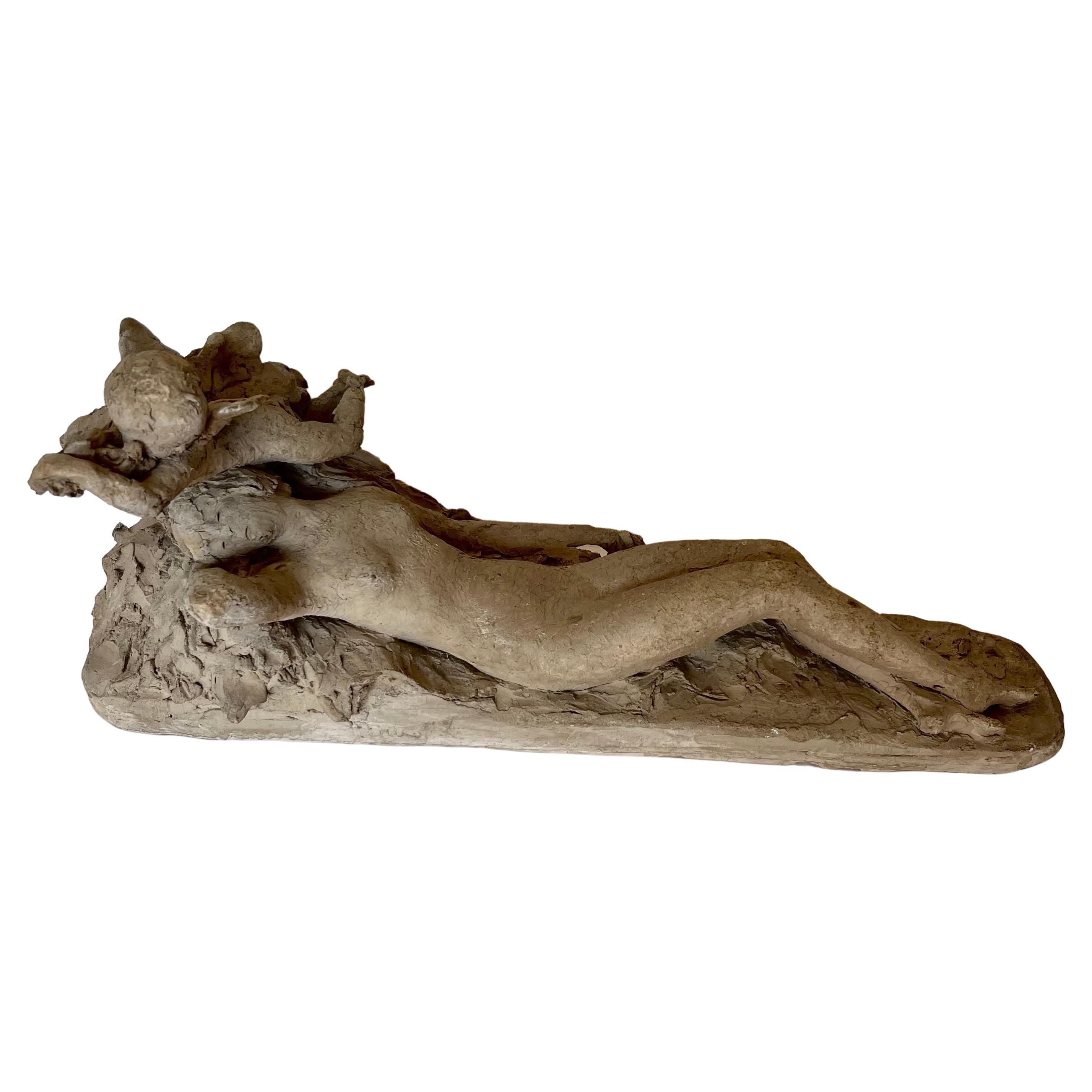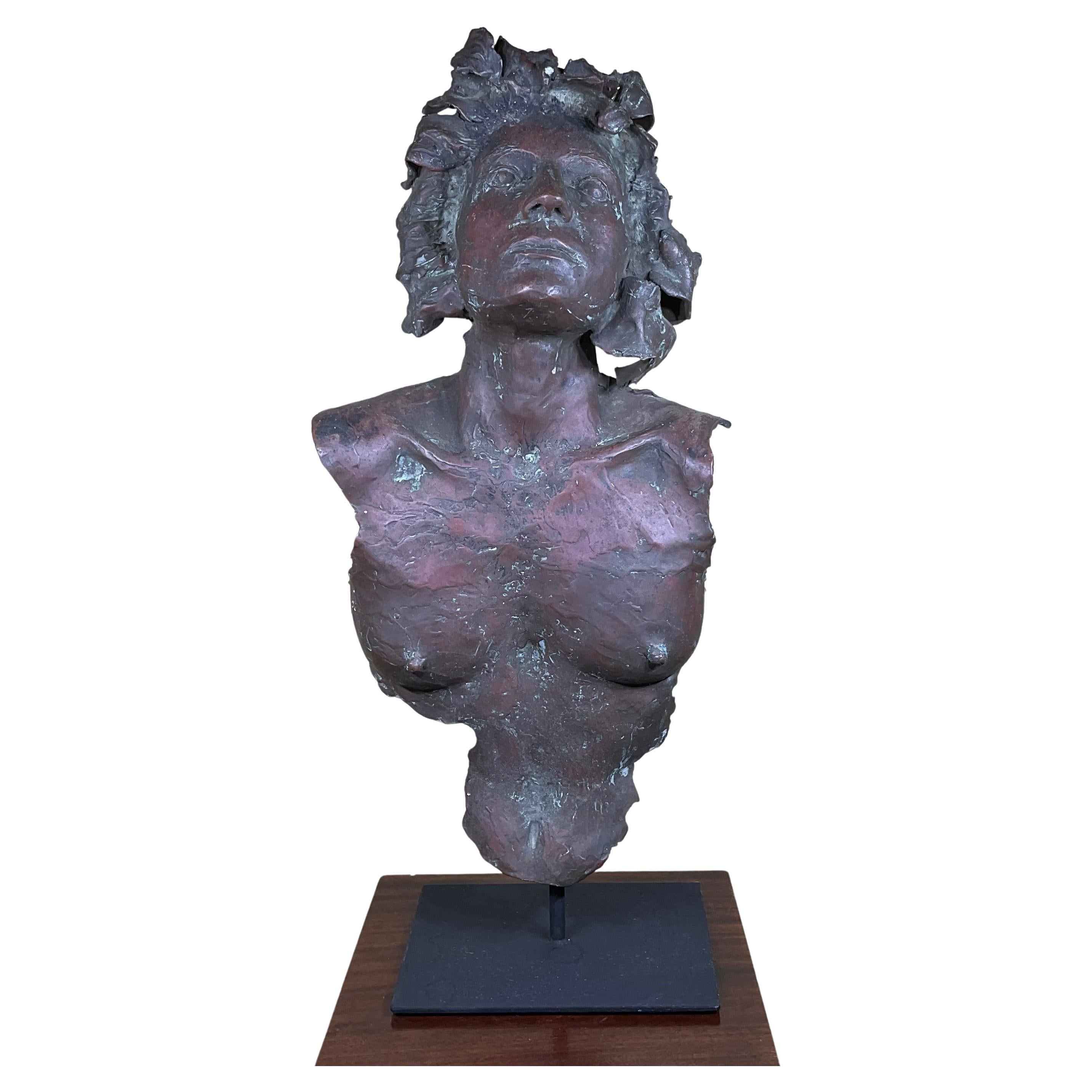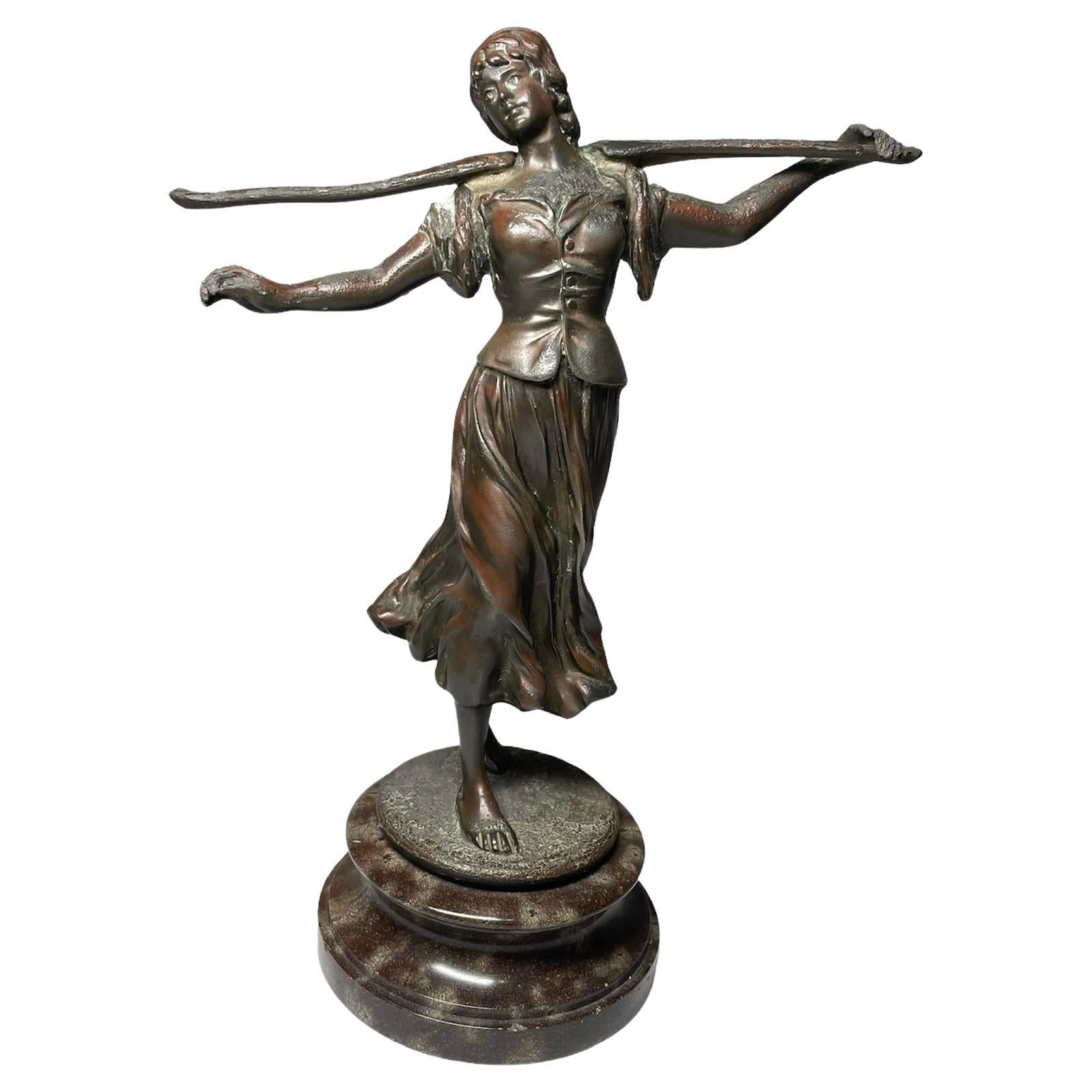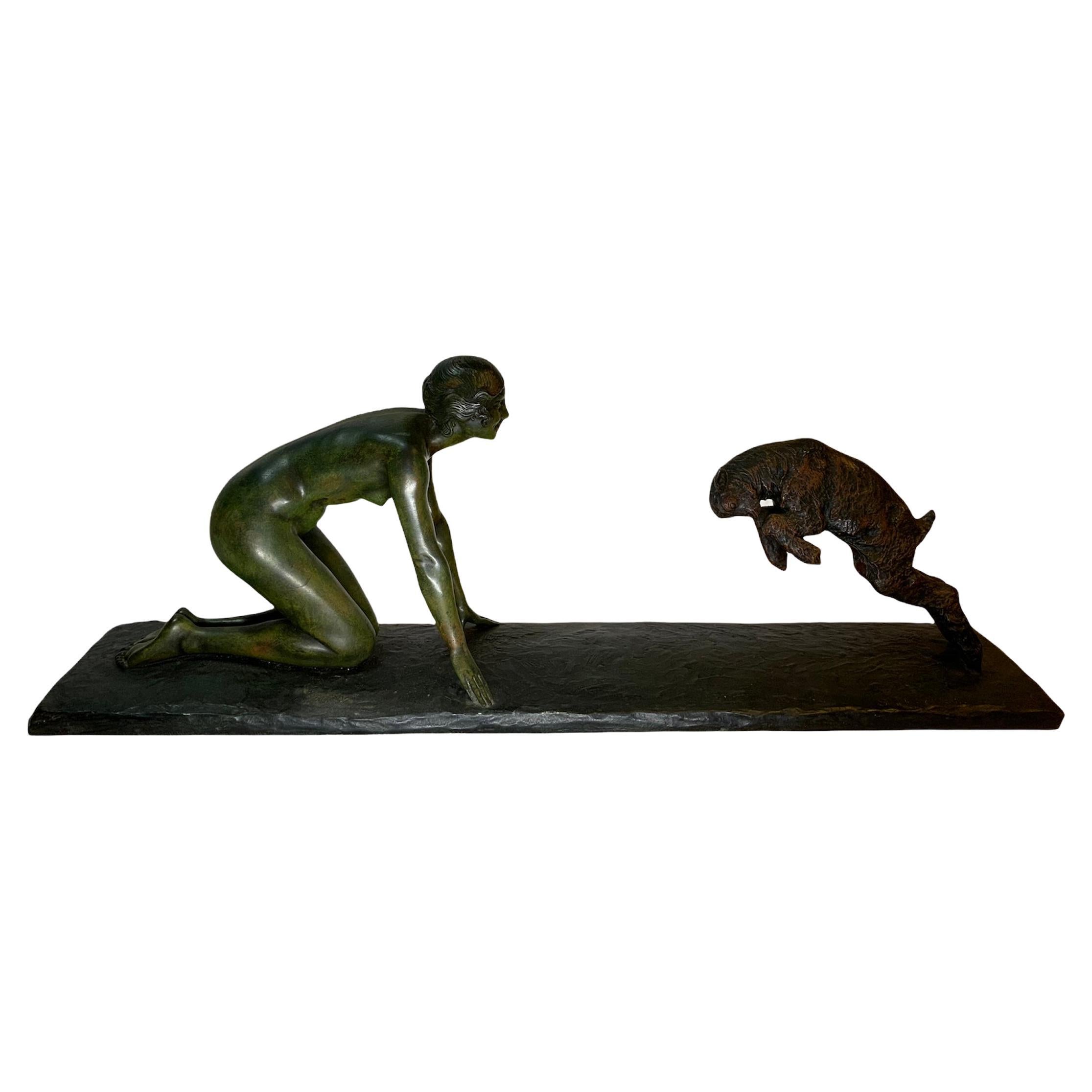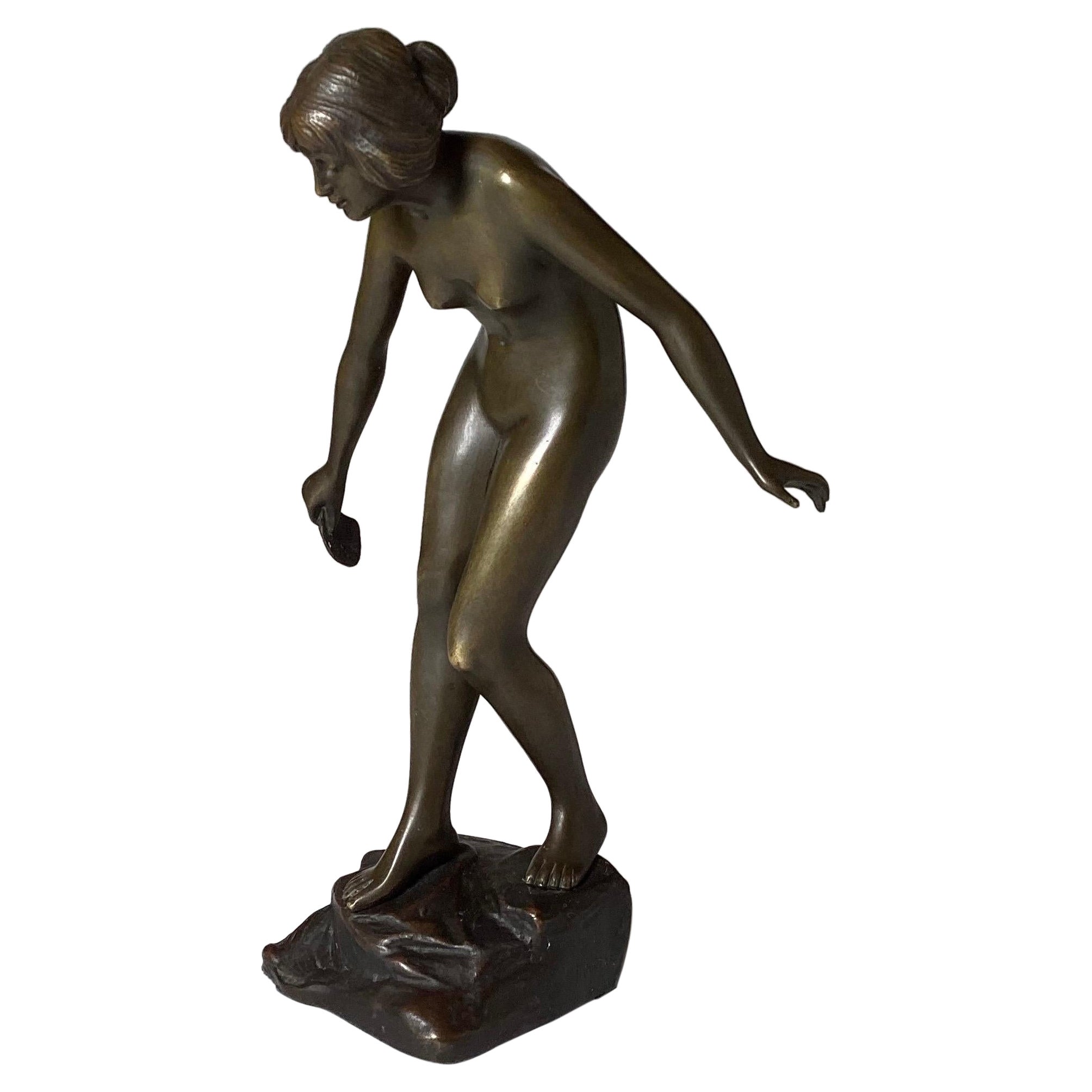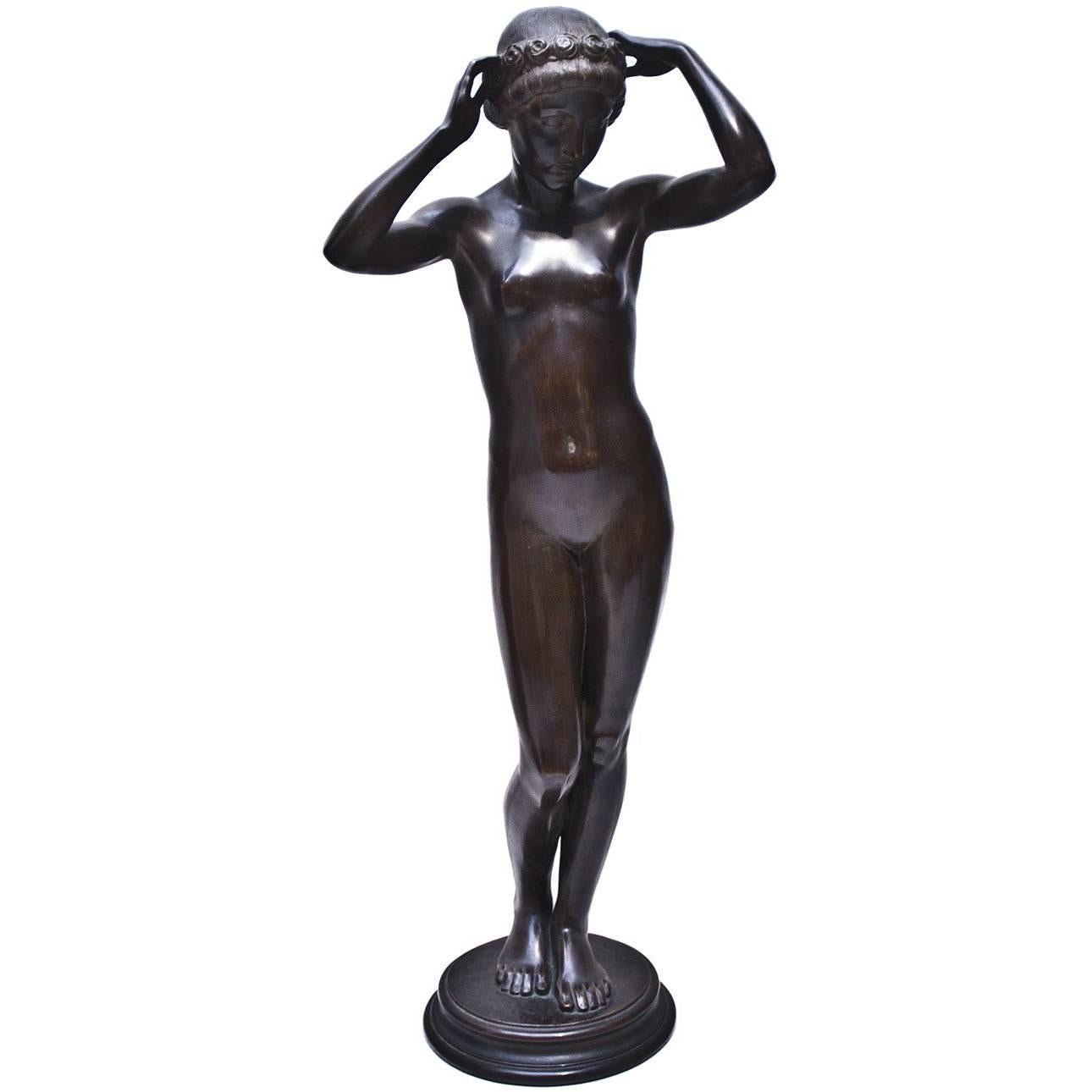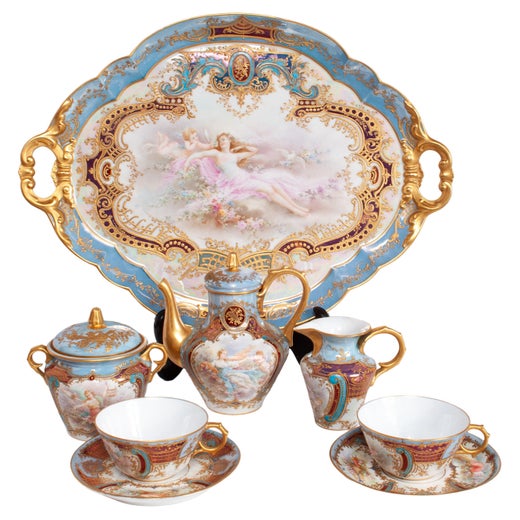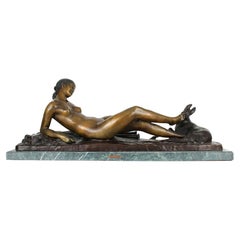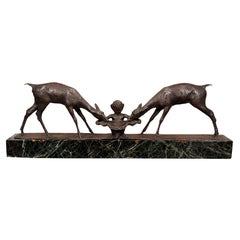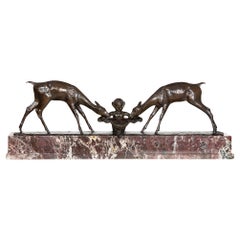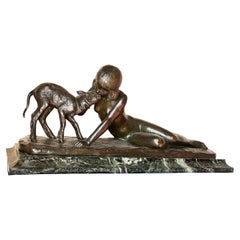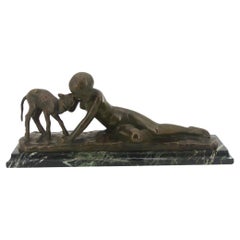
Ary Bitter, Bronze sculpture of Young Woman and the Lamb
View Similar Items
Ary Bitter, Bronze sculpture of Young Woman and the Lamb
About the Item
- Creator:Ary Bitter (Artist),Manufacture Nationale de Sèvres (Manufacturer)
- Dimensions:Height: 9.1 in (23.12 cm)Width: 21.65 in (55 cm)Depth: 6.3 in (16.01 cm)
- Style:Art Deco (Of the Period)
- Materials and Techniques:
- Place of Origin:
- Period:
- Date of Manufacture:1920-1949
- Condition:Minor fading.
- Seller Location:Tilburg, NL
- Reference Number:1stDibs: LU8057232663602
Manufacture Nationale de Sèvres
A maker of exemplary European ceramics for hundreds of years, Manufacture Nationale de Sèvres has produced porcelain of the highest quality since 1740.
The factory enjoyed royal patronage from its earliest days, and its most prominent patrons in the late 1700s — King Louis XV of France and his mistress, Madame de Pompadour — commissioned some of the period’s most elegant and striking pieces (only the truly wealthy could afford porcelain at this time). The company was originally established in Vincennes but was moved at the request of Madame de Pompadour, in 1756, to Sèvres, near Versailles, so that its operations would be closer to her château.
Sèvres became a mighty and much-revered factory working under a special grant from King Louis XV — the company’s owner as of 1759 and whose abundance of orders for special state gifts put financial strain on the company. Madame de Pompadour is said to have commissioned Sèvres to create an entire indoor garden of porcelain botanicals, for example.
While Sèvres gained a sterling reputation for its soft-paste porcelain wares, the company was late in entering into the production of hard-paste porcelain.
Hard-paste porcelain is the most common type of Chinese porcelain, then a widely exported and profitable product that was not made in Europe until the 18th century. The resources at Sèvres were largely relegated to meeting the demands of Louis XV, and secondly, it did not acquire the secret formula for hard-paste porcelain until 1761.
Until it obtained the coveted secrets behind hard-paste porcelain from a chemist named Pierre-Antoine Hannong — and, years later, gained access to the elusive raw materials to make hard-paste porcelain — Sèvres produced soft-paste porcelain for decades that was widely celebrated but is comparatively a far weaker type as opposed to the hard-paste productions of the company’s rival, Meissen, in Saxony, the first to produce true porcelain outside of Asia.
The artisans at Sèvres applied the rarest and most difficult-to-produce colors to their decorative objects and dinner services. One such color, the bright bleu de roi, became the manufacturer’s signature shade and is found on many of their objects. Sèvres also experimented with rarely glazed or unglazed works that bore no decoration at all — bisque porcelain, French for “biscuit,” refers to unadorned white porcelain sculptures made at Sèvres that resemble white marble after being kiln-fired.
Sèvres marks were applied over the glaze or rendered with cuts by a sharp tool — authentic Sèvres porcelain is most commonly marked with two interlaced Ls that are painted in blue and enclose a third letter. Painters and potters were tasked with affixing marks to record their role in the creation of a particular piece, and as a lot of these artisans’ names are recorded in archival factory materials — and there is also much to be learned at the Sèvres museum — it’s likely that you can accurately identify your Sèvres piece.
Find antique and vintage Manufacture Nationale de Sèvres vases, urns, sculptures and more on 1stDibs.
Ary Bitter
Ary Bitter was an important French artist, best known for his animal sculptures. He was a designer, painter, and sculptor in various mediums including plaster. In 1910, his work l’Enfant au chevreau received an honorable mention and he carried off the school’s “Chenavard” prize. The following year, in 1911, he won the “Lemaire” prize, and a year later, in 1912, he exhibited at the Salon des Artistes Français and was a regular exhibitor there up until 1939. Bitter won a bronze medal at the 1913 Salon and the silver medal at the 1921 Salon. In 1913, he worked on a public fountain in Nantes. In 1921, he was commissioned to work on the Sanary-sur-Merwar memorial as well as those in the Marseille cemeteries of St Louis and St Jérôme. In 1923, Bitter created a mascot for Mme Louis Renault’s car and in 1924 won the gold at that year’s Paris Salon The next year, he was one of the sculptors featured by the founder Susse Frères in an exhibition at the Boulevard de la Madeleine showroom. He was commissioned by Susse Frères to work with them on several limited editions. In 1927, he exhibited the work Chloé allongée at the Salon and in 1931 saw him exhibit a bronze version of Diane Chasseresse and in 1932 he was made a Chevalier de la Légion d’Honneur and his Cajolerie was declared hors concours at that year’s Salon. In 1935, Bitter showed two works at the Salon, Léda and Le Cygne. Further honors followed when in 1937 he was awarded a gold medal at the Exposition Internationale des Arts et des Techniques de Paris and he was invited to show work at the “Palais de la Céramique” and the “Palais du Métal”. Bitter was also given a diplôme d’honneur by the École Nationale Supérieure des Beaux-Arts.
You May Also Like
20th Century European Neoclassical Figurative Sculptures
Bronze
Vintage 1930s French Art Deco Sculptures
Bronze
20th Century French Art Deco Animal Sculptures
Marble, Bronze
Mid-20th Century French Art Deco Figurative Sculptures
Bronze
Mid-20th Century French Art Deco Figurative Sculptures
Terracotta
Vintage 1930s French Art Deco Figurative Sculptures
Terracotta
